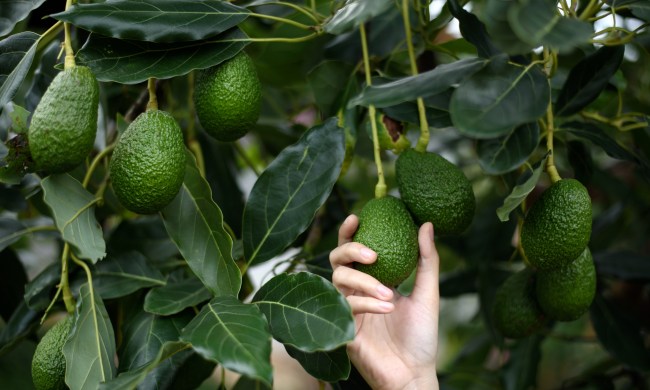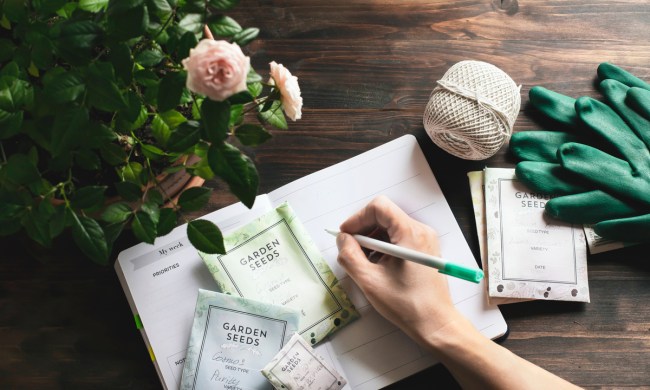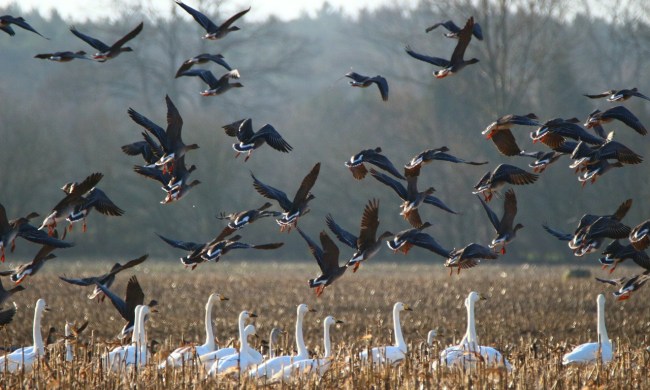Gourds are popular for jack-o’-lanterns, but what else can you do with them? If you’ve harvested more than you need or have a few more than you need for Halloween, then you’ll be thrilled to know that there are plenty of fun ways to use your extra gourds. They pair particularly well with other fall decor items, including homemade corn stalk decorations. Whether you have leftovers from autumn recipes or you want easy-to-access fall decor, here are five creative uses for gourds to incorporate into your home this autumn.
Turn them into lanterns

Who said that gourd lanterns have to be for Halloween? In addition to (or instead of) orange pumpkins as jack-o-lanterns, try other colored pumpkins and squashes to create festive lanterns. Start by scrubbing the outside of your gourd with soap and water. Then, cut off the base and scoop out as much of the insides as possible. Trace your designs onto your pumpkin with a pencil and cut them out using a pumpkin carving kit or power drill. Afterward, jazz up the surface of your lantern with mineral oil for shine. To minimize the fire hazard factor, pop in string Christmas lights or an LED tea light instead of a candle.
Of course, it helps to work with dried gourds, although completely dried gourds should be prepared for next year instead of immediate use. If you’re wondering how to dry out a gourd for crafts, it’s actually not too complicated. You’ll want to start by cleaning the outside of your gourd thoroughly and letting it dry for about a week in a well-ventilated area. Then, leave them in a dry, dark place to cure for about six months, making sure to rotate them every few weeks.
Other quick alternatives to preserving your gourds include spritzing them with bleach water or rubbing petroleum jelly onto them. If you’re going down these routes, make sure not to put any fire sources inside your gourd.
Make planters

Making a vase with your gourd is essentially the same as making the aforementioned lantern. You’ll want to clean the outside and scoop out as many of the insides as possible. (To get even more garden use out of your gourd, don’t forget to toss the seeds and pulp into your compost bin.) Instead of popping in a light source, add your favorite plant or flowers. To avoid spreading mold to your houseplant, keep your plant inside its nursery pot with a saucer underneath it. If you’re going with the vase route, you can pick out fall flowers such as chrysanthemums, sunflowers, and pansies to play up the autumn vibes.
Make a bird feeder

Yes, you can absolutely make a bird feeder from a gourd and replace it with a cone for winter holiday fare later. All it takes is sawing off the bottom third of your gourd and scooping out the pulp and seeds. Then, grab a few feet of twine to create a macramé hanger. (See more specific instructions on how here.) Place your gourd into the hanger and drop in bird seeds. Tie it to a tree or some other structure in your yard, and you should be good to go. Instead of a hanger, you can also drill two holes on the sides of your gourd and tie secure knots on both ends.
Use them as Thanksgiving table pieces

This idea is probably the least involved way to use your fall gourds since it doesn’t require any carving or cutting. If you have miniature gourds in your garden or come across them at your local garden center, pop them onto your dining table for effortless fall vibes. For extra visual interest, mix and match shades of white, orange, and yellow as well as bumpy and smooth textures.
When you have guests visiting for Thanksgiving, place your gourds next to leaves, cornstalks, candles, and name tags on your dinner table or in guest rooms to elevate your autumn decor game. You can even draw on your gourds with paint and glitter pens, but they should be good to go all on their own. There are many different ways to arrange them — nest them inside a basket for a cornucopia or lay them across the center of your table.
Make an instrument

Many cultures across the world use gourds to make instruments, with traditions stretching back centuries. Gourds make a fantastic base for instruments, since they have hollow bodies when dry and thick, hard skins. They can be used to make woodwind instruments (such as the hulusi from China), string instruments (such as the kora from West Africa), and percussion instruments (such as the balafon, also from West Africa). While many incredible instruments can be made from gourds, if you want to try making your own, the simplest place to start is with a rattle or shaker.
Start with a gourd that is fairly small and has a long neck so you can hold it comfortably, and then sun dry your gourd. Rotate your gourd to ensure it is drying evenly, and protect it from the rain when possible. Once your gourd is dry, you have two options. You can use the seeds already in the gourd as the sound source, or you can cut a hole to remove the seeds and add beads, pebbles, or another small, sound-creating object. If you choose the second option, remember to seal the hole again afterward. Decorate your shaker to your liking, and it’s ready to go.
There’s no easier way to decorate during autumn than with gourds. Not only can you eat them, but you can also get crafty with them. Their sturdy shells make them the perfect material for projects such as bird feeders, lanterns, and planters. If you want a straightforward way to make your Thanksgiving table feel cozy and elegant, line them up for centerpieces. You’ll be one of those people saying, “oh my gourd” in no time.




